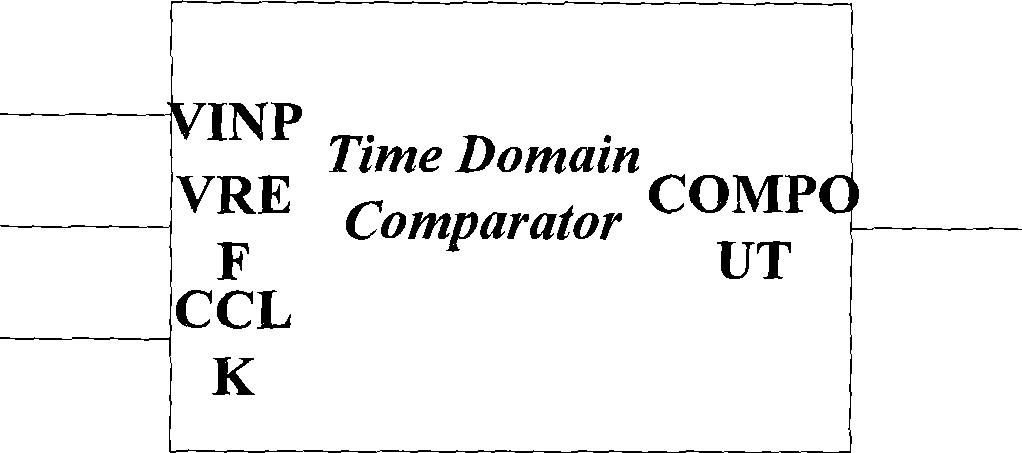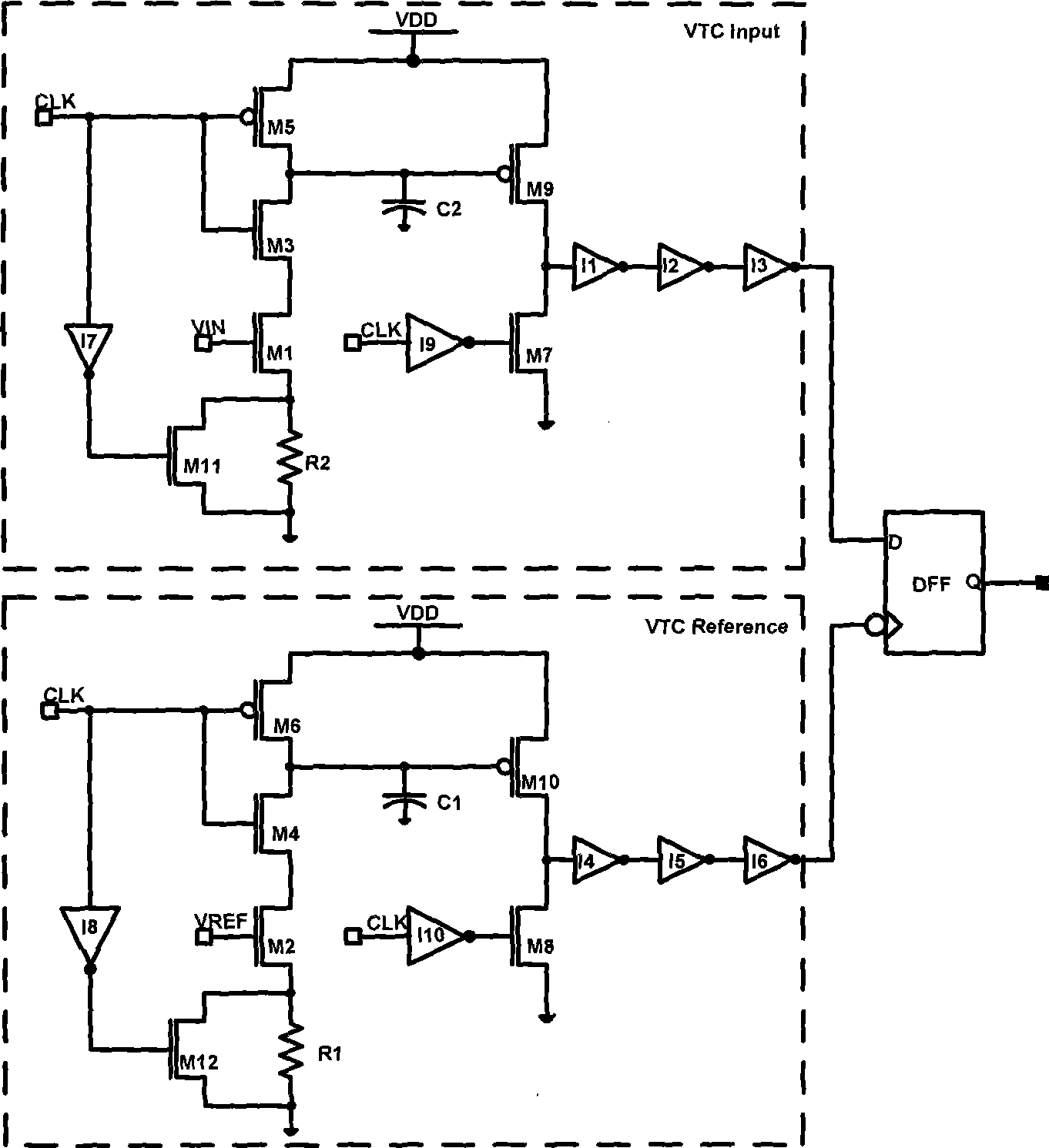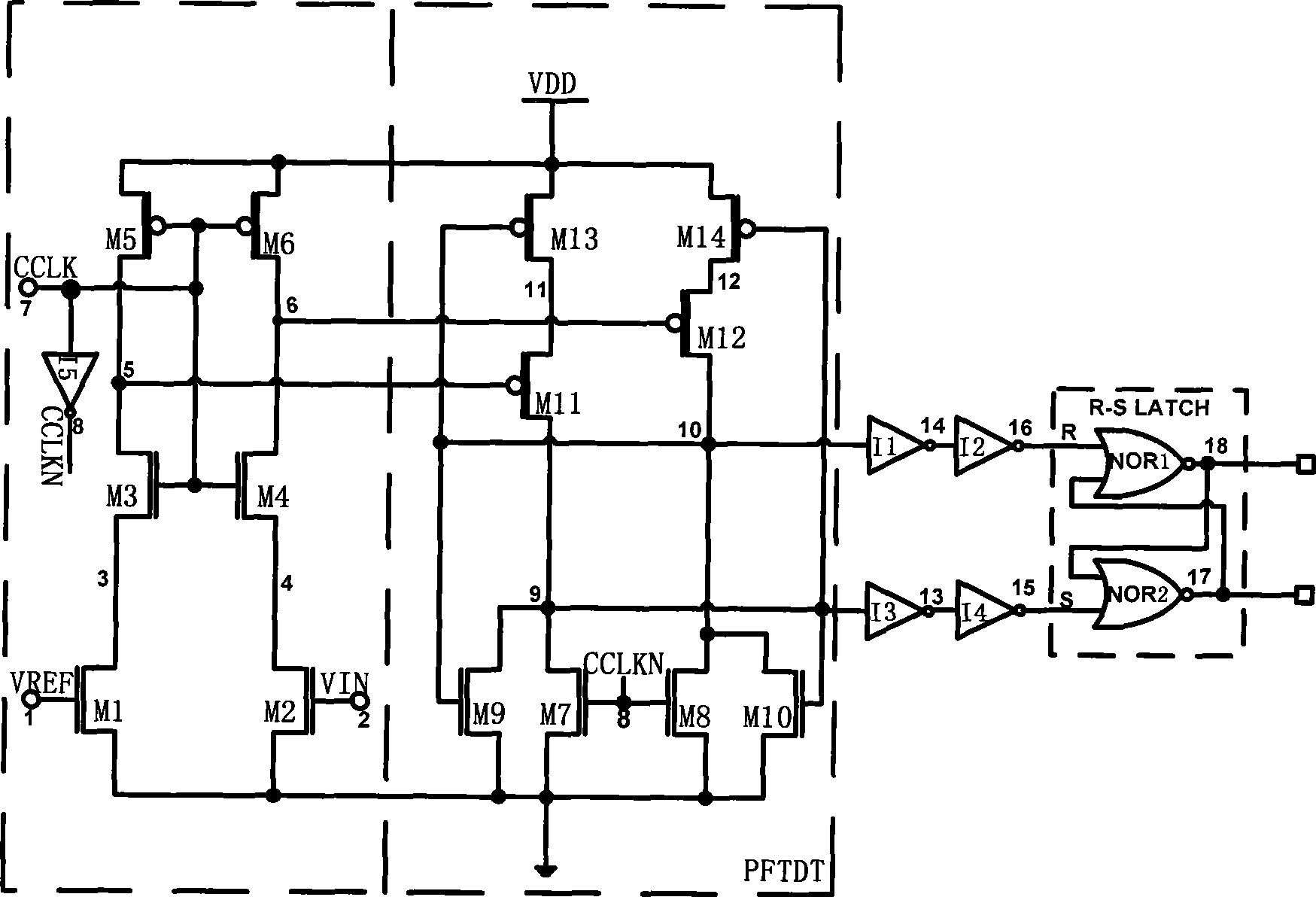Successive approximation comparator for ADC based on time domain
A successive approximation type, comparator technology, applied in instruments, signal transmission systems, electrical components, etc., can solve the problems of low power consumption, increased area, only 1.875MHz, etc., to achieve low dynamic power consumption and working speed. improved effect
- Summary
- Abstract
- Description
- Claims
- Application Information
AI Technical Summary
Problems solved by technology
Method used
Image
Examples
Embodiment Construction
[0023] The technical scheme that the present invention solves its technical problem is: the time domain comparator (TDC) of PFTDT and level latch that the present invention proposes, as image 3 shown. The TDC of the present invention adopts PFTDT for time-to-digital conversion, and then uses a level latch instead of a flip-flop (DFF) to latch the comparison result to improve precision and simultaneously increase the maximum speed of the comparator.
[0024] figure 2Is the traditional time domain comparator circuit. It is mainly composed of two parts: voltage-time converter (VTC) and output D flip-flop. The voltage-time converter consists of two branches: V2T Input and V2TReference. The output of V2T Input is connected to the data terminal (D) of DFF through three inverters (I1, I2 and I3) and the output of V2T Reference is also passed through Three inverters (I4, I5, and I6) are connected to the trigger terminal of the DFF. The operation of the comparator includes two mo...
PUM
 Login to View More
Login to View More Abstract
Description
Claims
Application Information
 Login to View More
Login to View More - R&D
- Intellectual Property
- Life Sciences
- Materials
- Tech Scout
- Unparalleled Data Quality
- Higher Quality Content
- 60% Fewer Hallucinations
Browse by: Latest US Patents, China's latest patents, Technical Efficacy Thesaurus, Application Domain, Technology Topic, Popular Technical Reports.
© 2025 PatSnap. All rights reserved.Legal|Privacy policy|Modern Slavery Act Transparency Statement|Sitemap|About US| Contact US: help@patsnap.com



